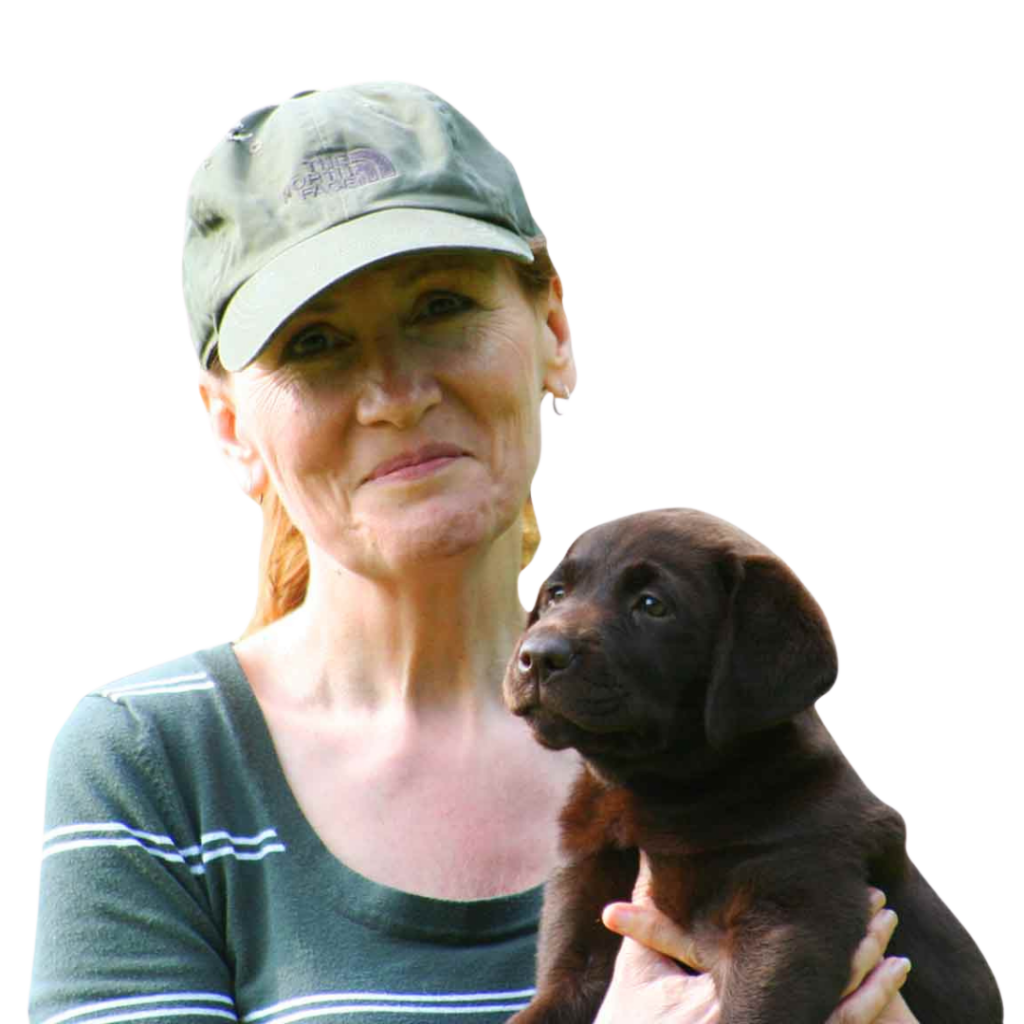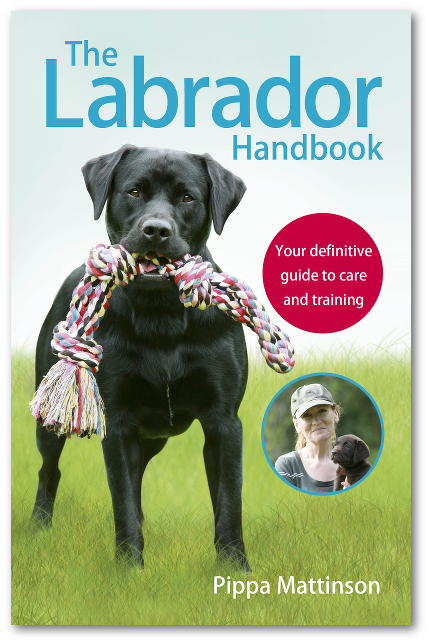The Dynamic Blue Heeler Lab Mix
The iconic Blue Heeler is a stocky, driven and a vigorously zealous cattle driving partner. The Labrador Retriever was also born and bred for work in the field, but their hunting role required more patience and less pizazz.
It’s therefore no surprise that the Blue Heeler Lab mix, fondly known as the Labraheeler, is a quick witted, intelligent and active hybrid dog. But one whose temperament can vary from over the top enthusiasm, to chilled out cosy companion.
If you are looking for a sporting dog, one that can do informal agility or keep herds of ranch animals in check, then a Lab mixed with a Blue Heeler is a great choice.
But if what you want is a family pet that accompanies you on evening strolls and sleeps through the day, then you’ll want to get to know this cross breed a bit better before committing to your new Lab Heeler mix puppy.
Contents
Cattle Dogs and Field Sports
There is a tendency amongst dog fans to lump various dog breeds into one big pot, and assume that they have a lot in common. And don’t get me wrong, a black Lab mixed with a Blue Heeler is going to share some historical tendencies, but these roles required quite different temperaments.
Working Australian Cattle Dogs need to have exceptional courage and grit. They need to be determined to get between the huge members of the herds they are controlling, steering them through rough terrain and discouraging them from straying from their peers.
Labrador Retrievers are peg dogs. They are traditionally meant to sit beside a hunter waiting for game to appear, and then happily rush to retrieve it. Navigating obstacles like brooks and rough terrain with ease. Returning the game to hand, then having another relaxed wait for their next assignment.
A Lab Heeler mix will have some of their prey drive tempered by the calmer Labrador Retriever genes, but you might find you have a dog that is neither fearless nor attentive to their handler.
Trainability Levels
Australian Cattle Dog Lab mixes have a huge potential when it comes to training, but you’ll need to have your wits about you. It’s positive reinforcement all the way for these clever pups.
From the first day you bring home your Labraheeler puppy, you’ll want to reward every behavior you want to see and ignore those that you don’t. Set your puppy up to win by keeping things you don’t want them to grab out of reach, and giving them only access to smaller areas of the house to begin with.
As they grow up, use clicker training to teach an excellent recall command, and practice those all important sit/stays with patience.
Do Looks Matter?
Almost all Labraheelers are a purebred chocolate, yellow or black Lab mixed with a Blue Heeler. So a first generation cross. It’s a lot more unusual to find a Blue Heeler yellow Lab mix and even rare to see a chocolate Lab cross, because most working Labs have black coats so these are the primary pick for this canine combo.
Blue Heeler markings are incredibly distinctive, but you are very unlikely to see this gorgeous mottled coat on your Lab Heeler mix. They tend to be black and white, with the more pale areas giving a fun gray flecked appearance.
Their ears vary between classic Labrador lows and Blue Heeler highs, sometimes with one of each. But that clever nose will always be twitching, and their paws will always be moving. Searching out the next thing to keep them busy.
Fitness and Form
One of the big bonuses of picking out a Blue Heeler Lab mix puppy is that it’s got a good chance of being healthy. Both the Labrador and Australian Cattle dog are fit for function. They have even builds, with long muzzles and well proportioned legs and backs.
Excellent stamina, agility and jumping ability are a given, provided that you get a puppy whose Lab parent has great hip and elbow scores. You’ll also want to make sure the Labrador parent has a clear eye test. And doesn’t carry the genetic disposition for Progressive Retinal Atrophy.
As a working bred dog that’s never needed to be Kennel Club registered, Blue Heelers tend to be very healthy in order to fulfil the cattle driving tasks most of them are still used for today.

Free Labrador Updates!
Get my training tips, news, reviews, and the latest from The Labrador Site delivered to your inbox



I have one best dog ever. 12 years
We adopted my very first dog this past March,, Shadow. He’s a now 11 year old Black lab/ Heeler mix and i have to say he is the best dog i could have ever hoped for. He lived with a foster family for 3 months. The original owner was in Hospice. Shadow adapted very well,, we all adapted very well as we are a cat family. Im so in love with this pup. He is very loyal and protective of me. Loves people! He loves people. He doesn’t like other dogs near me but does amazingly well around other dogs for example at the groomer. They ask to keep
Him all day as he helps with the little ones. Shadow is so very affectionate and loves snuggle time. When outside hes always on the hunt and goes crazy for a ball but it has to be a soccer volly or foot ball. Shadow has been on Holistic care for cancer and has been doing amazing. He definitely has the will to live and is not suffering in any way. He just amazes me daily.
So Ms Lisa are you also against rescuing and adopting a lab mixed with “your” breed by anyone living in Suburbia? There are hiking trails, beaches, as well as activities for dogs in this new era. We can take our pets to these locations in our Teslas.
First of all a Blue Heeler is a working cattle dog. Bred for ranch and farm work. They are not bred for Suburbia. They don’t make a good house and backyard dog. They have to have a job or they get destructive. Why would you even consider crossing these 2 breeds? As a cattle owner and multiple heeler owner, leave our breed alone. Live in town, please, buy a lab.